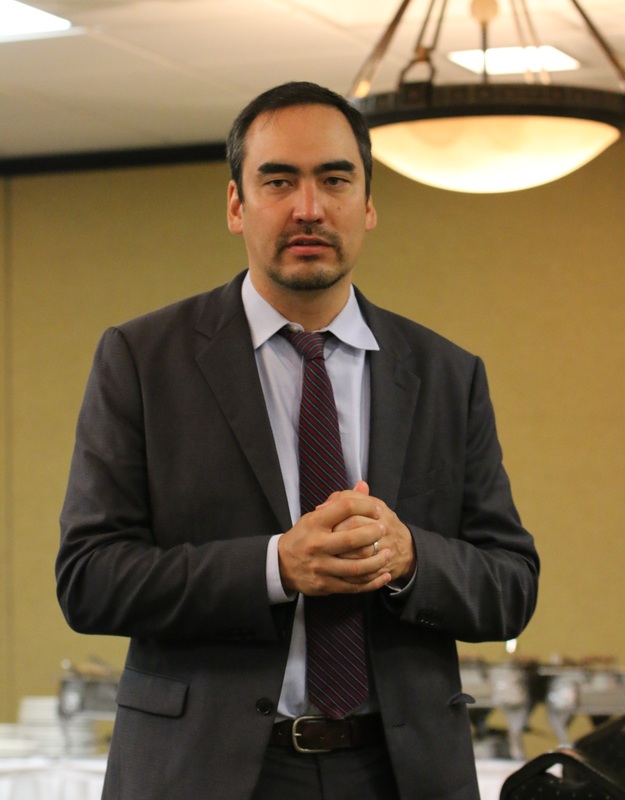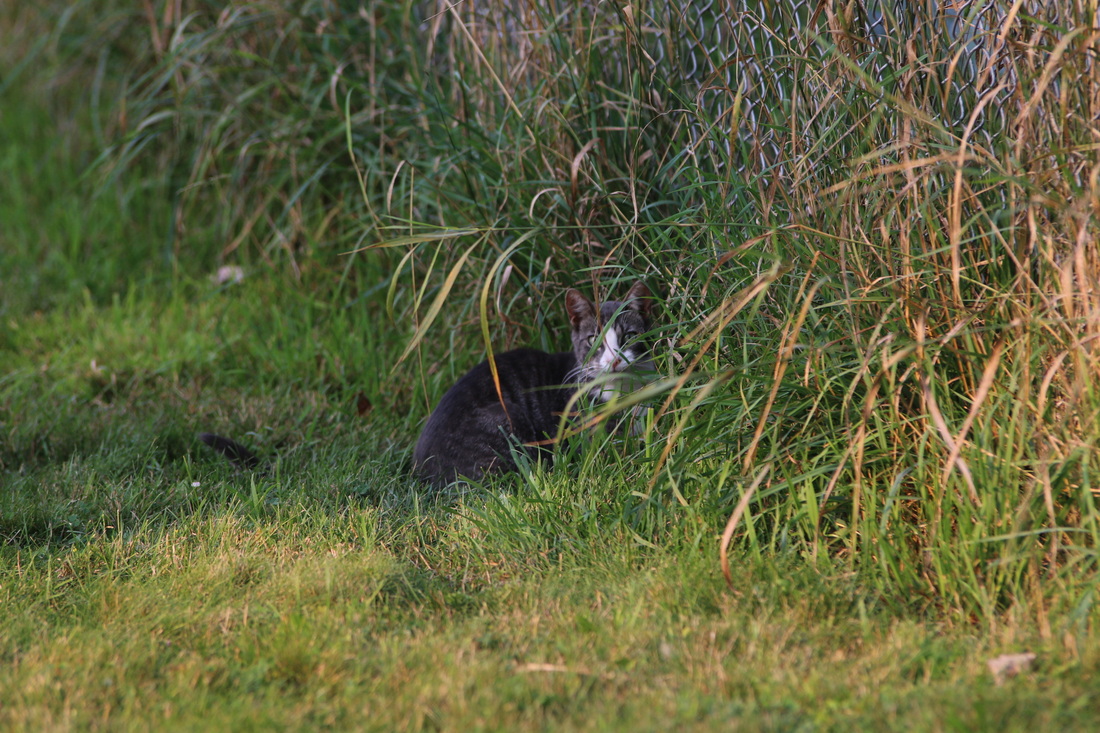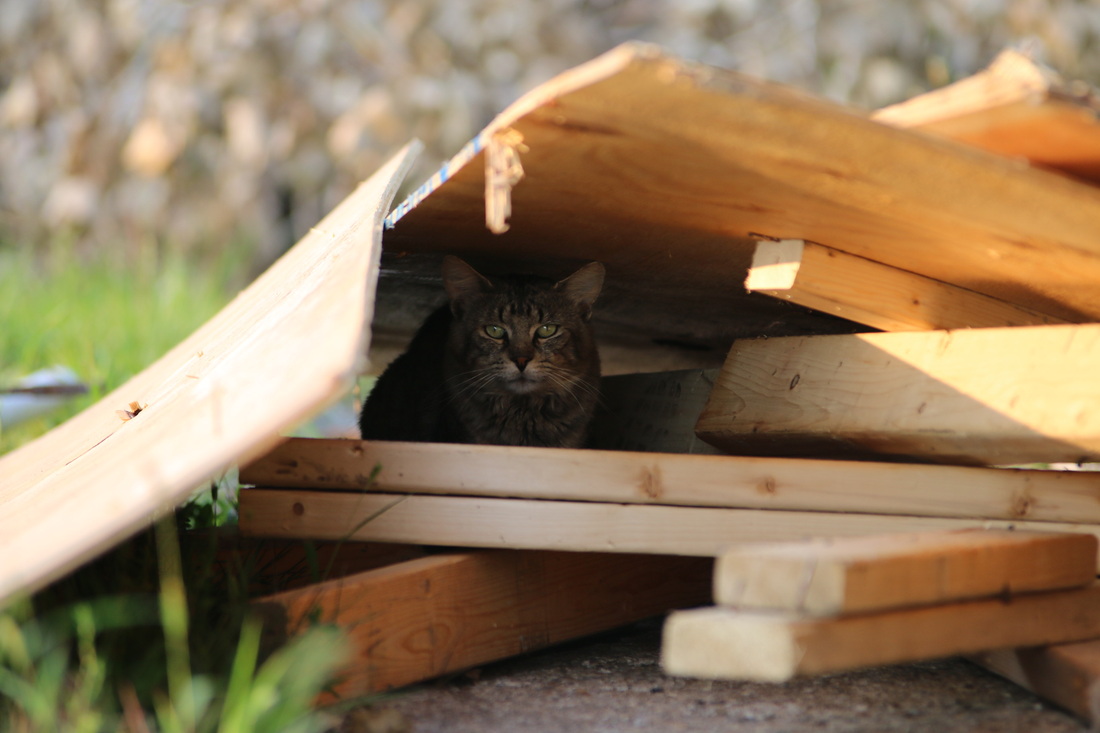|
Tim Wu is a biochemist, lawyer, scholar, professor and Democratic candidate for Lieutenant Governor of New York. He is a very charming man who really believes in democracy and the traditional values of the Democratic Party. Remember when Democrats were concerned about people, education, housing, jobs, the environment, civil liberties and all that old fashioned stuff? Listen to his presentation at lunch yesterday. When Danielle Coogan, her sister and girl friends had a birthday meal at a restaurant on Tonawanda Island recently, they got more than they bargained for and it wasn't at all pleasant. The service, food and environment were fine except for one thing, cats. Too many free roaming cats, and especially too many kittens. Now, Danielle and her husband Richard don't mind cats. They have four rescued felines of their own at home. In fact, Danielle, a North Tonawanda homemaker and mother of three kids who hopes to become a nurse, has volunteered with Ten Lives Club, a local rescue group, caring for young kittens until they are adopted by their forever owners. But on Tonawanda Island there were just too many cats, and the presence of kittens meant that they were breeding and would increase their population until food and space resources were exhausted. At that point, kitten mortality, animal fighting and disease would level their population in a decidedly violent and inhumane manner.
The Coogan's experience was somewhat reminiscent of the scene which greeted customers who dined in the seafood restaurants lining Newburyport Massachusetts' Merrimack River in the early 1990s. There were so many stray and hungry cats staring in the windows that diners couldn't bear to eat in front of them. In 1992, Newbury port became the first municipality to conduct a successful trap, neuter and return (TNR or TNVR since the cats are also vaccinated) program. With TNR, cats are humanely trapped, sterilized, vaccinated against common feline diseases and rabies, left ear tipped, and returned where they were found. A left ear tip has become an international signal that the cat has been TNRed, is being cared for and should be left alone by animal control authorities. In Newburyport, TNR solved the troublesome cat problem and, as the well fed, happy, healthy and non-breeding animals began to get older, adoption of all the old codgers was considered and rejected. They seemed happy on the street and the last of the original animals, a cat named Zorro, lasted until 2009. The Merrimack River Feline Rescue Society, which was responsible for this first program, is still active and has subsequently assisted more than 100 communities in Massachusetts and New Hampshire to implement TNR programs. A year earlier in 1991, a young Nathan Winograd, an aspiring law student at Stanford, was appalled when the university proposed to summarily trap and exterminate hundreds of free roaming campus cats. Winograd sought the assistance of national animal welfare groups like the Humane Society of the United State (HSUS) who shocked him by concurring in the wholesale slaughter approach proposed by Stanford. Nathan went on to be a distinguished and impassioned leader of the international No Kill movement which seeks to end shelter killing of animals. A shelter is considered to be No Kill if 90% or more of its animal intakes are released alive to a permanent home. Winograd is the author of several books, including Redemption: The Myth of Pet Overpopulation and the No Kill Revolution in America, which many consider to be the bible of No Kill and the director of the No Kill Advocacy Center. Winograd's No Kill Equation, a formula for taking a shelter No Kill, features TNR as one of its necessary components. His documentary movie, Redemption: The No Kill Revolution in America , is currently on national tour and will be shown by Winograd at the Amherst Theater in Buffalo on September 27. He has been a powerful and frequent critic of national organizations like the HSUS, ASPCA and PETA. He has probably written more animal welfare laws than anyone alive, and he writes a monthly feature article in the Huffington Post. Maybe the HSUS should have helped him in 1991. But it's not the Twentieth Century anymore. In a stunning and welcome turn around, the HSUS partnered with the International City/County Management Association (ICMA, see ICMA.org) to endorse TNR as the best practice for dealing with free roaming, un-owned (community) cats. They jointly published Managing Community Cats, A Guide for Municipal Leaders, which may be downloaded at the hot link provided. This joint endorsement by two well known organizations represents a sea change in "establishment" attitudes towards TNR. The ICMA is a relatively conservative group whose "mission is to create excellence in local governance by developing and fostering professional management to build better communities." These guys are not given to taking flyers on radical new ideas. When the ICMA calls something a "best practice," municipal leaders ignore their advice at their own peril. It also doesn't hurt that it costs more than $100 to catch and kill a cat and less than $60 to TNR one. Humane, effective and cost beneficial is hard to argue with. Meanwhile, back at the restaurant, enter the Coogan's. Rick and Danielle aren't old enough to remember the companion animal welfare battles of the early 1990s, but they knew about TNR and they felt they had to do something. Danielle said “I was just kind of astonished by the amount of cats and I just felt like something needed to be done and I’m here to do it.” And do something she did, setting up a crowdfunding GoFundMe account seeking funds to help her ".... to humanely trap as many adults as I can, they will then be transported to Operation Pets, where they will be vaccinated, sterilized, have one of their ears "tipped" (to show they've been sterilized) & re-released back on to the island.” Danielle has already raised more than $10,000 to accomplish her task. Now the Island Cat story as gone international and is being reported by the UPI. So what could possibly go wrong? Plenty. It seems that TNR is illegal in many municipalities of Erie and Niagara Counties, except the City of Buffalo, which only passed a nation leading TNR approval ordinance last June 10! Furthermore, the inappropriately named Tonawanda Island is actually located in North Tonawanda which has some of the most feline hostile laws in Western New York. In NT, it's against the law to feed, give aid or comfort, or in any other way help out a stray cat who is down on his luck. Seems that way back in the Twentieth Century (1999) the City passed some very restrictive cat laws in response to a messy hoarding situation. Well, Dorothy, we're not in Kansas and it's 2014. Times change and new ideas and leaders emerge. The intrepid scholars of the SUNY Buffalo Law School Pro Bono Law Project, led by Vice Dean Kim Diana Connolly who wrote Buffalo's new ordinance, have embarked upon a program to change laws in all other cities, towns and villages to make Western New York TNR friendly. The Law Project reached out to Danielle and they are now working to change North Tonawanda's laws in conjunction with today's city officials. If you would like to help, drop the electeds a line and tell them to give the Island Cats a break. Their names and addresses are available here. Danielle has also joined the stalwart volunteers of Buffalo Humane (soon to be Pets Alive of Western New York) a local No Kill animal advocacy, rescue and sheltering group which will assist in carrying out the necessary TNR activity. Following early media publicity about the Island Cats, Danielle was contacted by the Niagara County SPCA which holds the animal control contract with North Tonawanda. If they provided TNR assistance, it would certainly be helpful. But they won't. Instead, NC SPCA Executive Director Amy Lewis has indicated that she will concentrate on changing NT's "archaic town law", stating “It’s become kind of an epidemic over the years. We can’t let it spiral out of control.” But it may already be out of control, and it's difficult to understand how Lewis, a high school graduate, will be able to augment the efforts of a veteran UB Law School vice dean with years of experience in promoting pro bono legislation who is backed by bright and eager young students and experienced community attorneys. Stay tuned, this story will continue. |
|






